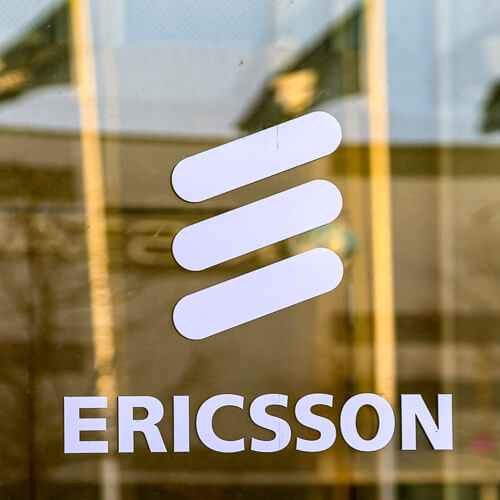Ericsson sees wider benefits of India's FWA ambitions
The latest Ericsson Mobility Report has upgraded growth forecasts for FWA based in part on deployment in populous markets such as India.

Fixed wireless access (FWA), regarded as the 5G industry's first big success beyond smartphone contracts, has already been making significant waves in North America thanks to widespread FWA services powered by midband spectrum.
To be sure, T-Mobile US networking chief Neville Ray has made no effort whatsoever to disguise his delight over FWA growth at the self-styled Un-carrier, even though some in the cable industry have described FWA as a "parking lot" for future cable subscribers.
The success of the service also seems to have taken some industry forecasters by surprise. Indeed, the November 2022 edition of the Ericsson Mobility Report includes an updated FWA connections forecast, with the 200 million mark now expected to be reached a year earlier than before.
FWA connections are estimated to reach 300 million in 2028, of which almost 80% will be 5G. In 2022, connections are forecast at 100 million.
The India effect
Peter Jonsson, executive editor of the Ericsson Mobility Report, said the FWA forecast has been adjusted in large part owing to the announced plan by an operator in India to serve 100 million homes with 5G FWA services.
Here, Jonsson appears to be referring to Reliance Jio, which in August unveiled the Jio AirFiber plug-and-play device that will be connected to Jio's 5G network to provide a personal Wi-Fi hotspot.
Ericsson also noted that almost 40% of the new 5G FWA launches in the past 12 months have been in other populous countries such as Mexico, South Africa, Nigeria and the Philippines. "So we see growth potential in those countries," Jonsson said.
Figure 1:  The latest Ericsson Mobility Report has upgraded growth forecasts for FWA based in part on deployment in populous markets such as India.
The latest Ericsson Mobility Report has upgraded growth forecasts for FWA based in part on deployment in populous markets such as India.
(Source: Ericsson)
Richard Möller, senior market analyst, business area networks at Ericsson, pointed to a further significant benefit of a large-scale FWA rollout in such a populous market as India: "It will also likely contribute to driving down the price points on 5G CPE … and that will benefit the entire world market," he said.
Möller added: "From a historical point of view … fixed wireless access has been talked about for the last couple of cellular generations … But so far, it's turned out to not really be that big … With 5G and the advanced 4G that we have now the operators can actually offer the capacity needed to compete with other broadband technologies. We see this kind of potential for the technology."
Both Möller and Jonsson pointed out that FWA connection figures do not represent the actual number of FWA users, with multiple people relying on one connection within a single household. Möller noted that around 800 million to one billion users could be supported by this technology in 2028.
Overall, Ericsson's research found that out of 310 service providers worldwide, 238 (or 77%) had an FWA offering. During the last 12 months, the number of service providers offering 5G FWA services has increased from 57 to 88, the company added.
As well as FWA, the most common 5G consumer services launched by service providers are enhanced mobile broadband (eMBB), gaming and some AR/VR-based services.
Broadband IoT is taking over
The estimate for FWA take-up was not the only adjustment made in the latest Ericsson report: Jonsson said the outlook has also been updated for cellular IoT "based on market drivers." While estimates for total cellular IoT connections have not changed, "we have a different mix here," Jonsson said.
Möller elaborated further by saying that LTE Cat-1 devices are increasingly complementing narrowband IoT and Cat-M, and broadband IoT and critical IoT are increasing their share of overall cellular IoT connections.
"We're still talking about strong growth, we're talking about 2, 3 billion connections here. But it's not going that fast. And this is a market which is very, very much about China. Half of this market is China. So development there largely dictates the change in the forecast," Möller said.
Ericsson notes that LTE Cat-1 devices, which support 10Mbit/s downlink and 5Mbit/s uplink speeds, are increasingly being used for a variety of use cases. Hence, its forecast for the broadband IoT segment has been adjusted upwards. By the end of 2028, almost 60% of cellular IoT connections are forecast to be broadband.
5G rising
One forecast that remains unchanged is the expected number of 5G subscribers in 2022, although Ericsson seemed somewhat surprised that current macroeconomic challenges have not dampened take-up figures this year.
The number of 5G subscribers is still expected to reach 1 billion by the end of 2022. However, Möller pointed out that 5G take-up could have been greater without the economic and geopolitical challenges that have affected supply chains.
Want to know more? Sign up to get our dedicated newsletters direct to your inbox.
"A large amount of phones are still sold in the world and most advanced smartphones sold today will include 5G, so when subscribers upgrade, they get a 5G subscription and a 5G phone. So we get the strong uptake despite the fact that smartphone sales are down 10% this year," Möller said.
Global 5G subscriptions are expected to reach 5 billion in 2028, accounting for 55% of all mobile subscriptions. The Ericsson report notes that 5G subscription uptake is faster than for 4G, with 5G expected to reach 1 billion subscriptions two years sooner than 4G. 5G is on track to become the dominant mobile access technology by subscriptions in 2027.
Related posts:
— Anne Morris, contributing editor, special to Light Reading
Read more about:
AsiaAbout the Author(s)
You May Also Like











